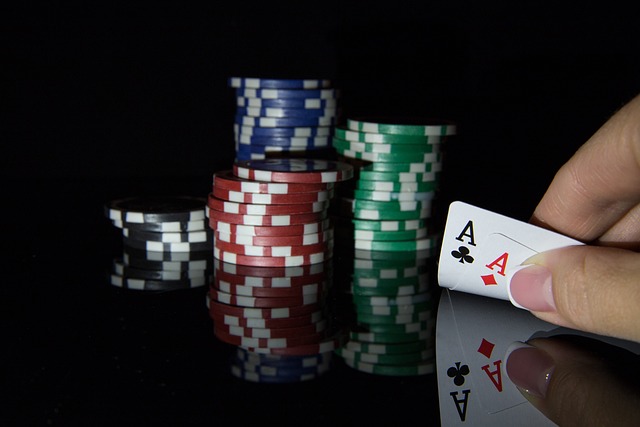
11 Ways to Read Their Poker Hand
Reading an opponent’s poker hand involves keen observation and strategy. Players often look for physical tells, betting patterns, and changes in demeanor to predict the strength of their opponents’ hands. Advanced players also consider position, the texture of the board, and previous actions in the hand. Understanding these elements can significantly improve one’s ability to make educated guesses about what cards the other person is holding.
Hand Reading in Poker
This essential skill can elevate your game significantly, providing insights into your opponents’ strategies and potential weaknesses. Read on for a deeper understanding and more detailed strategies on hand reading in poker. Exploring various approaches and honing this skill can become a game changer.
Observe Betting Patterns
One of the most effective methods to gauge what cards your opponents might be holding is to watch how they bet. A player who consistently raises or re-raises pre-flop might have a strong starting hand. Conversely, someone who often checks or calls could be playing more cautiously, possibly with weaker cards. Paying attention to changes in these patterns can also give clues. If a typically aggressive player suddenly checks, they might have failed to improve their hand on the latest draw.
Analyze Body Language
Even in online games where you can’t see your opponents, clues can come from the timing of their actions. A quick bet might indicate a strong hand, while a delayed response could suggest indecision. In physical games, look for tells such as tapping fingers, excessive blinking, or changes in posture. Players often unknowingly give away the strength of their hand through physical reactions, no matter how subtly.
Consider Hand Ranges
Instead of trying to pinpoint the exact cards another player holds, think in terms of ranges. This involves assessing all the possible hands they could have based on their actions and the cards shown on the table. By considering a range of hands, you can make more informed decisions about how to proceed with your own hand. Poker is not a game of certainties but probabilities, and thinking in hand ranges is a disciplined approach to navigating these probabilities.
Focus on Position
A player’s position at the table can drastically impact the range of hands they might play. Those acting early in the betting rounds have less information and might play only the strongest hands. Players in later positions have the advantage of observing how others bet before them, which can lead to more speculative play from these positions. Recognizing these tendencies can help determine what kind of hand an opponent might hold.
Understand the Texture of the Board
The community cards on the table largely dictate the potential strength of a player’s hand. A board with close-ranking cards, suited cards, or a possible straight can dramatically alter what hands might be in play. Assessing whether your opponent could have made a flush, straight, or set with the cards on the board is essential, and your own actions should reflect this analysis.
Assess Past Behavior
A player’s history can offer invaluable insights. If you’ve been at the same table as an opponent for a while, recall their past plays. Were they bluffing in previous rounds with weak hands, or do they only bet heavily when they’re sure of a win? This pattern recognition can inform your strategy when facing bets from them in future rounds.
Listen to Table Talk
While not always reliable, what players say at the table can sometimes reveal truths about their hands. Some might try to mislead with their comments, but others could unintentionally give away their hand strength. Keep an ear out for offhand remarks that might indicate how confident they are in their hand.
Compare Stack Sizes
A player’s chip stack can influence how they play a hand. Someone with a short stack may become increasingly aggressive, taking more risks. In contrast, a player with a substantial chip lead might play more conservatively or more daringly, feeling cushioned by their stack. Consider how stack size might affect an opponent’s decision-making.
Predict Reactions to Bets
Imagine the possible outcomes before making a bet. If you raise, consider whether your opponent is likely to fold, call, or re-raise with the range of hands you’ve assigned to them. This predictive thinking can help refine your hand-reading skills by forcing you to consider not just the current moment but potential future actions.
Consider Table Dynamics
The dynamic of the table can also provide valuable information about your opponents’ hands. For instance, if a player is consistently raising and winning pots, other players might start to become intimidated or frustrated, leading them to play more cautiously. On the other hand, if a player has been losing several hands in a row, they might become more aggressive in an attempt to win back their lost chips. Understanding these dynamics can help you predict how your opponents will play their hands and adjust your strategy accordingly.
Use Math to Your Advantage
Poker is, at its core, a game of probability and mathematics. Knowing the odds of certain hands and the likelihood of certain outcomes can significantly improve your hand-reading skills. For instance, if you know that there is a high probability of a flush draw on the board, you can make more informed decisions about whether to call or fold. Similarly, understanding the likelihood of your opponent holding a certain hand based on the cards on the board can help you narrow down their range and make more accurate predictions about their hand. While math might not be the most exciting part of poker, it can be a valuable tool for improving your game.
In summary, reading an opponent’s hand is an amalgamation of keen observation, pattern recognition, psychological insight, and strategic forecasting. Mastering this skill won’t happen overnight, but with practice and attentiveness, you’ll find yourself making more informed decisions, leading to potentially greater success at the poker table.










Thank you for sharing
Always easier on paper. Real life at the table, much different